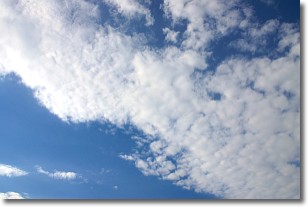Weather Alert in Michigan
Air Quality Alert issued July 29 at 11:50AM EDT by NWS Marquette MI
AREAS AFFECTED: Keweenaw; Ontonagon; Houghton; Baraga; Marquette; Alger; Luce; Gogebic; Iron; Dickinson; Menominee; Delta; Southern Schoolcraft; Southern Houghton; Northern Schoolcraft
DESCRIPTION: The Michigan Department of Environment, Great Lakes, and Energy (EGLE) has issued an Air Quality Advisory for elevated levels of fine particulates (PM2.5) in the Upper Peninsula of Michigan starting at 3 PM EDT on Tuesday until noon EDT Thursday. Pollutants are expected to be in the Unhealthy for Sensitive Groups (USG, Orange AQI) range. The alert is in effect for the following Michigan Counties, Keweenaw, Menominee, Dickinson, Iron, Marquette, Baraga, Northern Houghton, Southern Schoolcraft, Ontonagon, Delta, Gogebic, Luce, Alger, Northern Schoolcraft, and Southern Houghton. Smoke from the Canadian wildfires will move into the western Upper Peninsula Tuesday afternoon. Models then show the plume pushing south and east, covering the Upper Peninsula early Wednesday. The smoke is expected to linger across the region into Thursday. As the smoke moves in, we anticipate PM2.5 to increase into the Unhealthy for Sensitive Groups (USG) range. There is a possibility that hourly levels could reach the Unhealthy (red AQI) range for a short period of time. It is recommended that, when possible, you avoid strenuous outdoor activities, especially those with heart disease and respiratory diseases such as asthma. Monitor for symptoms such as wheezing, coughing, chest tightness, dizziness, or burning in nose, throat, and eyes. Reduce or eliminate activities that contribute to air pollution, such as outdoor burning and use of residential wood burning devices. Keep windows closed overnight to prevent smoke from getting indoors and, if possible, run central air conditioning with MERV-13 or higher rated filters. For up-to-date air quality data for Michigan, visit the MiAir site at https://air-egle.hub.arcgis.com/. For further information, please see EPA's Air Now site for up-to- date air quality data at https://www.airnow.gov. For further health information, please see MDHHS' Wildfire Smoke and Your Health site at https://www.michigan.gov/mdhhs/safety-injury- prev/environmental-health/your-health-and-wildfire-smoke.
INSTRUCTION: N/A
Want more detail? Get the Complete 7 Day and Night Detailed Forecast!
Current U.S. National Radar--Current
The Current National Weather Radar is shown below with a UTC Time (subtract 5 hours from UTC to get Eastern Time).

National Weather Forecast--Current
The Current National Weather Forecast and National Weather Map are shown below.

National Weather Forecast for Tomorrow
Tomorrow National Weather Forecast and Tomorrow National Weather Map are show below.

North America Water Vapor (Moisture)
This map shows recent moisture content over North America. Bright and colored areas show high moisture (ie, clouds); brown indicates very little moisture present; black indicates no moisture.

Weather Topic: What are Stratus Clouds?
Home - Education - Cloud Types - Stratus Clouds
 Next Topic: Wall Clouds
Next Topic: Wall Clouds
Stratus clouds are similar to altostratus clouds, but form at a
lower altitude and are identified by their fog-like appearance, lacking the
distinguishing features of most clouds.
Stratus clouds are wider than most clouds, and their base has a smooth, uniform
look which is lighter in color than a nimbostratus cloud.
The presence of a stratus cloud indicates the possibility of minor precipitation,
such as drizzle, but heavier precipitation does not typically arrive in the form
of a stratus cloud.
Next Topic: Wall Clouds
Weather Topic: What are Altocumulus Clouds?
Home - Education - Cloud Types - Altocumulus Clouds
 Next Topic: Altostratus Clouds
Next Topic: Altostratus Clouds
Similar to cirrocumulus clouds, altocumulus clouds are
characterized by cloud patches. They are distinguished by larger cloudlets
than cirrocumulus clouds but are still smaller than stratocumulus clouds.
Altocumulus clouds most commonly form in middle altitudes (between 2 and 5 km)
and may resemble, at times, the shape of a flying saucer.
These uncommon formations, called altocumulus lenticularis, are created by uplift
in the atmosphere and are most often seen in close proximity to mountains.
Next Topic: Altostratus Clouds
Current conditions powered by WeatherAPI.com




